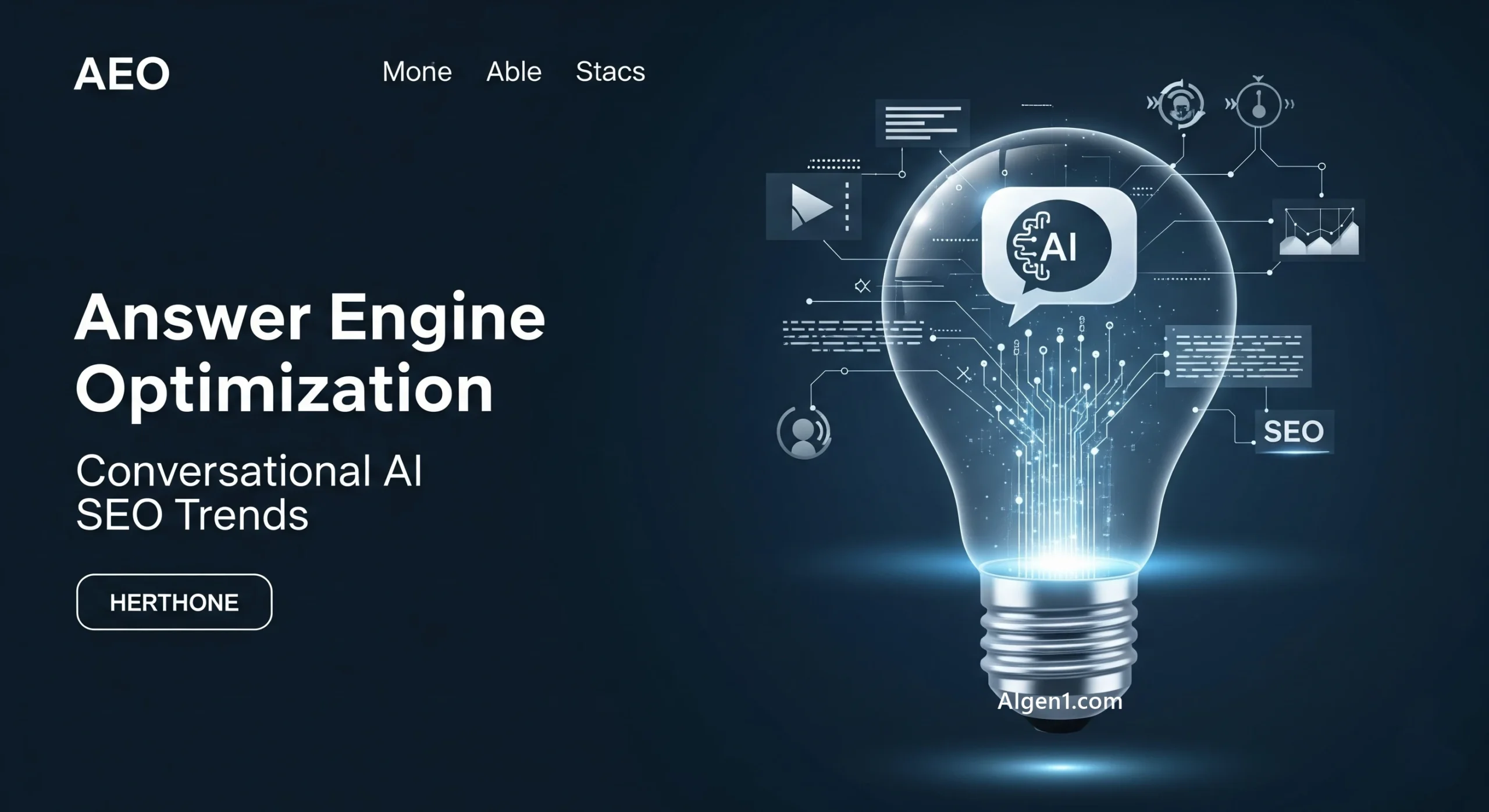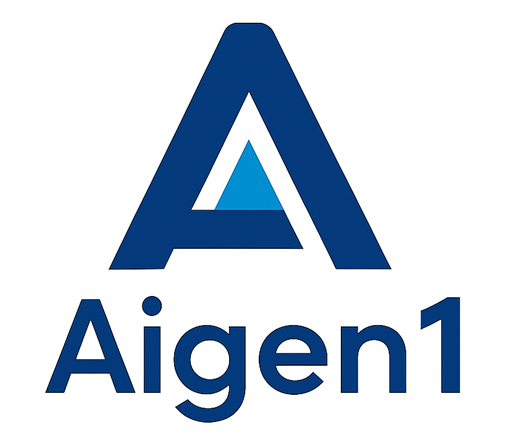The SEO landscape is undergoing a dramatic transformation, moving beyond traditional keyword-based optimization to a new paradigm: Answer Engine Optimization (AEO). With the rise of conversational AI, exemplified by Google’s AI Overviews, Perplexity, and ChatGPT, the way users search is shifting rapidly. As a result, businesses must rethink visibility, since by 2026 a significant portion of queries will deliver a “zero-click” answer, giving users direct responses without requiring a website visit. Consequently, this change demands a new, integrated approach that blends classic SEO with concise, authoritative, and machine-readable content.

Table of Contents
The Conversational AI Revolution and the Death of the “10 Blue Links”
For decades, the goal of SEO was to rank #1 on the Search Engine Results Page (SERP), securing a click and driving traffic. That model is now eroding. Today, AI-powered systems provide a single, definitive answer to a user’s question, often synthesizing a summary from multiple sources. Moreover, these AI-driven answers appear at the top of the SERP, reducing the need for users to scroll through organic links.
Google’s AI Overviews, expected to expand further, showcase this change with quick-to-digest summaries that sometimes include links to source websites. Although overall organic traffic may decrease, the visits that do come through are more qualified and intent-driven. In fact, users clicking from an AI overview are not just browsing casually; instead, they arrive with a specific need and are more likely to convert.
Natural Language Processing (NLP) also fuels this evolution by enabling AI models to understand the nuances of human language, including conversational queries, intent, and context. In addition, search engines now move beyond keyword matching to grasp the meaning behind a user’s question. Voice and visual searches, which are inherently conversational and context-rich, particularly benefit from this advancement.
The Pillars of Answer Engine Optimization (AEO)
AEO is a strategic shift that prioritizes being the cited authority in an AI-generated answer. It does not replace traditional SEO but rather augments it, focusing on new success metrics such as brand visibility, citations, and trust signals. Therefore, here’s how to build a winning AEO strategy for 2025–26:
1. Optimize for Conversational Queries
Instead of focusing only on short-tail keywords, your content strategy must center on answering the long-tail, question-based queries people ask in real life. Furthermore, this aligns better with how users naturally speak and search.
- Identify user questions: Use tools like “People Also Ask” in Google, Answer the Public, and keyword research tools to find the exact questions your audience types or speaks.
- Create question-based content: Structure your content around these questions. Use clear headings (H2s and H3s) phrased as questions, such as “How do I optimize my website for AI search?” followed by a concise, direct answer.
2. Prioritize Authority and Trust (E-E-A-T)
AI systems cite credible sources. Therefore, Google’s E-E-A-T (Experience, Expertise, Authoritativeness, and Trustworthiness) framework matters more than ever.
- Showcase expertise: Ensure content is written or reviewed by an expert. Add clear author bios with credentials and links to professional profiles.
- Cite your sources: Support claims with data, statistics, and reputable references. This not only builds trust with readers but also signals credibility to AI systems.
- Build a strong brand: Well-known brands are more likely to be cited. As a result, focus on PR, social media, and community engagement to strengthen recognition.
3. Structure Content for Machines and Humans
AI models work best with structured, well-organized information. Making your content easy for them to read is now essential. Moreover, clear formatting also improves the user experience.
- Use schema markup: Add structured data, especially FAQPage schema for question-and-answer pairs and HowTo schema for step-by-step guides. This helps AI understand your content’s purpose and increases its chances of being featured in an answer.
- Format for direct answers: Start with a concise, factual response (40–60 words) before giving a detailed explanation. Use bullet points, numbered lists, and bold text to keep key details scannable.
- Embrace multimedia: AI search is becoming multimodal. Therefore, optimize images with descriptive alt text, publish video content, and include transcripts. A short video demonstrating a process may be cited as the definitive answer over text alone.
4. Re-evaluate Your SEO Metrics
Traditional metrics like CTR and organic traffic are no longer the only indicators of success. Instead, AEO requires fresh ways of measuring impact.
- Focus on visibility and citations: Track how often your brand or content is cited in AI-generated answers, even without a click. This shows authority and trust.
- Measure user engagement: Visitors arriving from AI overviews are usually higher quality. Consequently, focus on metrics like conversion rates, form submissions, and time on site. A smaller number of highly engaged visitors is more valuable than a large volume of low-quality traffic.
The AEO Action Plan: 2025–26 Roadmap
To succeed in this new era, businesses should follow a phased approach. In addition, each phase should build on the previous one for long-term stability and growth.
Phase 1: Immediate Actions (Next 3-6 Months)
- Conduct an AEO Content Audit: Review your top-performing pages and check them for conversational query optimization. Do they answer common questions directly?
- Implement Schema Markup: Add FAQPage and HowTo schema to relevant pages.
- Optimize Existing Content: Update key blog posts and articles. Additionally, add question-based headings and lead sections with short, direct answers.
Phase 2: Strategic Development (Next 6-12 Months)
- Launch a Question-Based Content Strategy: Create new content specifically designed to answer the most pressing questions in your industry.
- Refine your Brand Authority: Publish on authoritative sites, secure quality backlinks, and position your brand and authors as industry experts.
- Invest in Technical SEO: Ensure excellent Core Web Vitals. A fast, mobile-friendly, and secure site is a key trust signal for both humans and AI crawlers.
Phase 3: Future-Proofing (Beyond 12 Months)
- Explore New Platforms: Search is shifting across platforms. Therefore, create content for social platforms like TikTok and optimize your Google Business Profile for local voice and map-based queries.
- Experiment with AI Tools: Use AI for keyword research, content ideation, and competitor analysis. Treat AI as a co-pilot, not a full replacement for human creativity.
- Innovate with Conversational Experiences: Add conversational AI to your website. Chatbots can improve user experience, capture valuable data, and guide visitors to the right content.
Conclusion: A Shift from Clicks to Citations
The evolution of search is both exciting and challenging for SEO professionals. The rise of conversational AI and “zero-click” answers is not a death knell for organic traffic but a call to adapt. By embracing Answer Engine Optimization, businesses can move from chasing clicks to earning citations and becoming the trusted authority in their field. Moreover, the brands that adapt will thrive, building long-term digital visibility. The future of search is already here, and it’s a conversation.
For more insights on AI-driven search strategies, explore our articles on Generative Engine Optimization, Artificial Imagination, and AI and SEO in 2025.
FAQs: Answer Engine Optimization & Conversational AI
Q1: What is Answer Engine Optimization (AEO)?
AEO is a strategic approach to digital marketing focused on optimizing content to be selected and cited by AI-powered search engines and conversational AI systems. Unlike traditional SEO, which prioritizes ranking for clicks, AEO aims to be the authoritative source for a direct answer, often resulting in a “zero-click” answer at the top of a search results page.
Q2: How does AEO differ from traditional SEO?
While AEO builds on the fundamentals of SEO, its primary goal is different. Traditional SEO targets keywords to drive organic traffic to a website. AEO focuses on providing concise, factual, and machine-readable answers to long-tail, conversational queries. Success in AEO is measured not just by traffic, but by brand visibility, trust, and how often your content is cited as the definitive source by AI.
Q3: Is my organic traffic going to disappear because of AI Overviews?
While AI Overviews may reduce the overall volume of organic traffic for some broad queries, the traffic that does click through is likely to be of higher quality and intent. Users who click from an AI Overview are often seeking more detailed information or a specific product/service, making them more likely to convert. Therefore, focus on the quality of traffic, not just the quantity.
Q4: What’s the most important thing I can do right now to prepare for AEO?
The most impactful immediate action is to audit your existing content for conversational queries. Identify the most common questions your audience asks and re-structure your content to provide a direct, concise answer at the beginning of the relevant section. Implement schema markup, such as FAQPage and HowTo, to signal this content’s purpose to search engine crawlers.
Q5: How important is E-E-A-T for AEO?
AI models are trained to prioritize content from credible and authoritative sources. Ensuring your content is written or reviewed by a subject matter expert, includes citations, and is published on a trustworthy site with a strong brand identity will significantly increase its chances of being cited in an AI-generated answer.
Q6: Should I stop creating long-form content?
No, absolutely not. While the initial answer may be brief, AI often synthesizes that information from detailed, comprehensive content. Long-form content allows you to provide the necessary depth, examples, and context that establish you as an expert. The key is to structure that long-form content with clear headings and a “brief answer first” approach to make it both human- and machine-readable.
Q7: Will AEO only be relevant for Google Search?
AEO principles apply to any platform that uses conversational AI to answer user queries, including Perplexity, Bing’s conversational search, and even dedicated platforms like ChatGPT. The rise of voice search and smart assistants also relies on these same principles of providing a single, definitive answer from a trusted source. Therefore, AEO is a multi-platform strategy, not just a Google-centric one.
For more insights, check out Search Engine Journal for the latest SEO trends and strategies.


